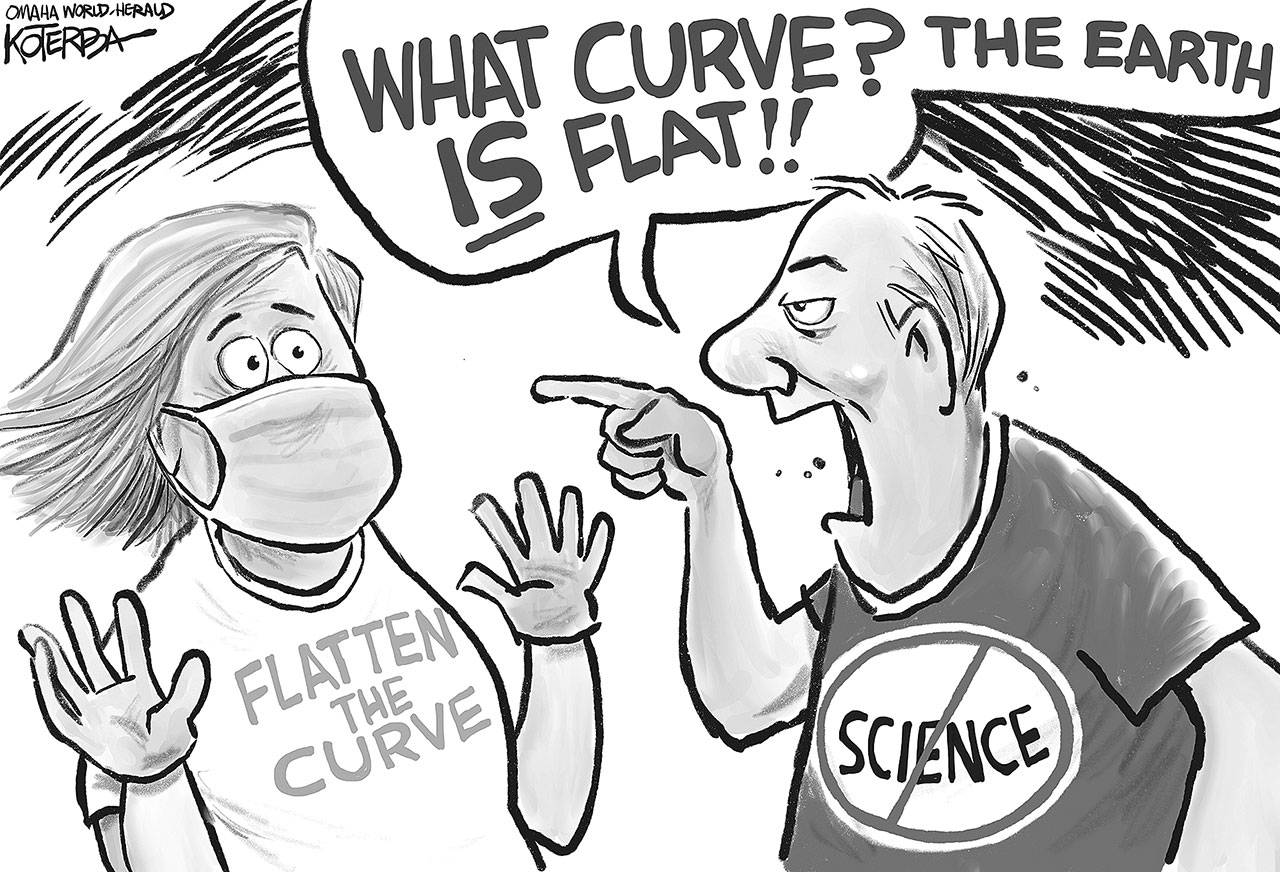By Doyle McManus
Los Angeles Times
At the outset of any war — think Pearl Harbor or the terrorist attacks of 9/11 — Americans traditionally pull together as one, erasing partisan and regional divides.
Our war with the coronavirus hasn’t gone that way. President Donald Trump declared himself a wartime president, but he hasn’t done much to unite the nation as real wartime presidents do.
Under Trump, partisan divisions have persisted in the face of common danger. Regions have been pitted against one another — rural areas against cities, red states against blue.
Instead of a single national strategy to quell the pandemic and revive the economy, 50 states are pursuing individual efforts. We’re living in the Disunited States of America.
Much of this reflects a practical reality. States like New York, New Jersey and Louisiana have been ravaged. Others have hardly been touched.
The coronavirus has cruelly intensified the urban-rural divide. It hit cities first: Seattle, New York, San Francisco, Chicago, Detroit, New Orleans. At least initially, rural Americans were spared.
“Y’all, we are not Louisiana, we are not New York state, we are not California,” Alabama Gov. Kay Ivey told her state in March, explaining why she hadn’t issued stay-at-home orders. Now Alabama has more COVID-19 cases per 100,000 inhabitants than California, although fewer than Louisiana or New York.
But the urban-rural divide is also a political fault line. Rural areas vote Republican, cities vote Democratic. In 2016, a record surge of Republican votes in rural counties gave Trump his margin of victory.
In many states, rural conservatives — some of whom once doubted that the pandemic was real — want their governors to reopen the economy, now.
Trump could have chosen to give Republican governors some political protection if they chose to keep schools and businesses closed a few more weeks for fear of a new surge in the coronavirus.
But he wants to “reopen” the economy before he faces voters in November. So he made clear that states should lift restrictions soon — but he also made sure governors will bear the consequences if things go wrong, not him.
He praised pro-Trump demonstrators who marched on Michigan Gov. Gretchen Whitmer’s office, demanding that she relax social distancing regulations. “LIBERATE VIRGINIA” and “LIBERATE MINNESOTA!” he tweeted Friday, urging his followers to protest Democratic governors in other swing states.
That’s an aberrant message from any president, let alone a wartime one.
Some Republican governors are already moving. On Friday, Greg Abbott of Texas announced that he is relaxing restrictions on retail stores and state parks.
Others have been more cautious. South Dakota’s Kristi Noem, facing a coronavirus outbreak in Sioux Falls, plans to go slow.
Supreme Court Justice Louis Brandeis famously called states “laboratories of democracy.” Overeager governors could turn their states into petri dishes instead.
Some governors will be tempted to declare their states “open for business” to attract new investment, much as they once competed for new factories with tax breaks.
Now they’re competing against one another for medical supplies and federal funds.
Last month, governors found themselves bidding against one another to buy face masks and ventilators for their hospitals. Now they’re competing to obtain the test kits they need to make sure it’s safe to reopen.
“This is mayhem,” New York Gov. Andrew Cuomo complained. “We cannot do it without federal help.”
Cuomo also had an old-fashioned complaint. He charged that Congress is shortchanging New York by distributing federal aid to hospitals without taking their level of need into account.
The emergency relief bill that Congress passed last month is distributing $100 billion to states depending on their total number of Medicare recipients, not their coronavirus patients.
As a result, according to Kaiser Health News, New York will get about $12,000 per coronavirus patient, while Nebraska will get about $379,000.
In the absence of federal supervision, a new form of division among states has appeared: 17 states have banded together in regional compacts to coordinate their recovery efforts.
California, Oregon and Washington are now the Pacific States of America. New York and six neighbors are now the Northeastern Confederation. Illinois and six others are the Great Lakes Partnership.
OK, their formal names are more prosaic: the Western States Pact and the Multi-State Council. The modest Midwesterners haven’t even named their alliance.
But it’s another measure of the weakening of our national union under Trump: the invention, born of necessity, of mini-federations.
Not since 1861 have so many states banded together to go their own way. This time, at least, the regions aren’t at war with one another.
“There’s nothing remotely like this in our history,” Donald F. Kettl, a scholar of federalism at the University of Texas, told me.
“We could be entering a period of incredible friction among the states,” he continued. “The consequences will fall not only on the economy and public health, but on our national political life as well. If we’re not careful, we’ll discover 18 months from now that we have made choices that will make us a lesser country —a less unified, less functional country.”
The nation isn’t coming apart. But it sure isn’t coming together. Our federal union is eroding before our eyes.



